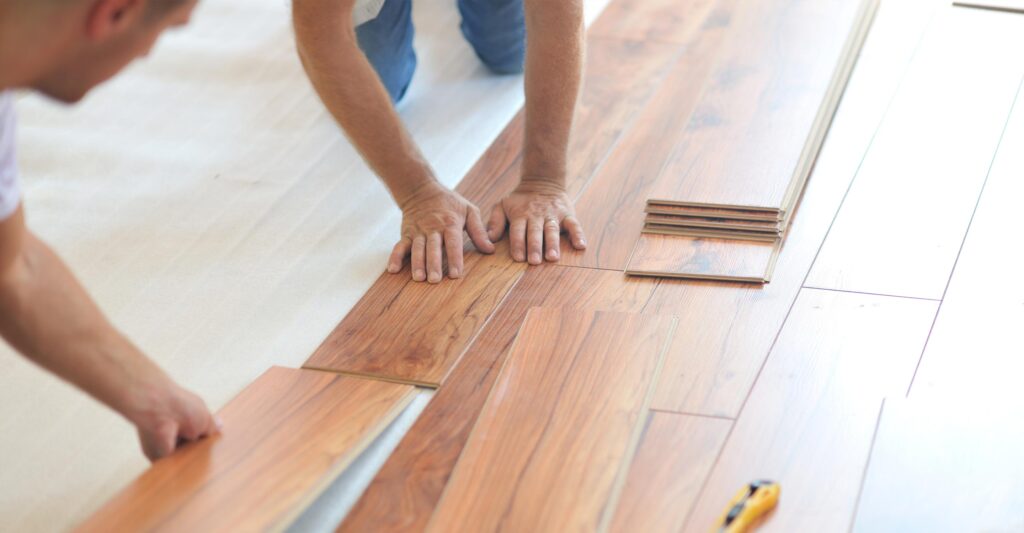Duco finish vs laminate, which one’s better? They are both a type of finish you can use for wooden components (and also metal in the case of Duco) in interior design. They give the product its final texture and also provide additional properties like scratch resistance, protection against chemicals, heat resistance, strength, etc.
You are inevitably going to have to select material finishes when you decide to get your home interiors, and both Duco paint and laminates are popular choices. If you’re not sure which one to pick, knowing what differentiates them will help select the right one for your home. This article will help you understand the difference between Duco Finish and Laminate. We compare how they are manufactured, their composition, finish styles, home applications, and cost. Let’s dig in!
Duco Paint is a solvent-based paint that is sprayed on woodwork or metal components to give it the final finish. Duco paint is durable and can be modified to give a glossy, matte, satin, or low-sheen finish.


Interesting fact: Duco was originally used in the automotive sector to paint cars. In fact, it was the short name given to DuPont Company’s automotive lacquer that was used to coat automobiles. It has, since then, been enhanced and is now used for home interiors as well, but has retained the name ‘Duco’.
Its most common alternative (among paints) is PU paint, which is a polyurethane-based paint that provides a smooth, matte finish.
Unlike PU paint, Duco is fast-drying, is applied only via a spray machine, and is cheaper than PU paint. PU paint is, however, more premium in texture and finish (and thus more expensive). But this is an article about Duco Finish vs Laminates, so let’s look at laminates next.

Laminates are of two forms depending on where they are used.
In the context of flooring, ‘laminate’ is a synthetic material made of multiple layers of materials like melamine resin and fibre board that are fused together using heat and pressure to form durable and decorative flooring material. The entire plank, made up of multiple layers, is referred to as the laminate here.

In the context of cabinets and countertops (like in kitchens), ‘laminate’ refers to only the outer layer or covering of the cabinet doors and panels that is fused to a thicker inner layer, called the substrate, that can be made of medium-density fiberboard (MDF), particleboard, or plywood. Even here, the laminate is synthetic and is used to provide texture and surface-level protection from chemicals, heat, etc.


Our focus is mainly on furniture (since that’s where Duco is commonly used), so when we say laminates we refer to the latter – the outer layer that coats the substrate.
The laminate can have a wooden look or other styles like glossy or matte. Laminate is commonly used for countertops, cabinets, and flooring because it is easy to clean, resists stains and scratches, and comes in a wide range of colours and patterns.
People often choose between laminates and veneers when it comes to cabinet and furniture finishing. Veneers are natural wood whereas laminates are synthetic. So naturally, veneers look more rich and real but laminates give you more options and can be more cost-effective.
| Duco Paint | Laminate | |
|---|---|---|
| Material | Duco is a type of paint, or more specifically, a nitrocellulose-based lacquer. | A laminate is a thin synthetic material. |
| Application | Duco is sprayed onto a solid object made of wood or metal. The paint dries up and solidifies to give the finish. | The laminate layer is fused to an inner substrate made of wood (MDF, plywood, etc). |
| Cost | In a broad and general sense, Duco is more expensive than laminates. | In a broad and general sense, laminates are more cost-effective than Duco. |
| Precision | Since Duco is applied as a liquid, it spreads evenly and covers every nook. This gives the furniture a smooth and even finish, especially around the edges and corners. | As compared to Duco, laminates could have the issue of chipped edges and jagged corners. Apart from that laminates also deliver a high-quality finish. |
| Finish | Smooth and glossy, you can also get matte and low-sheen. | You have a wide variety of choices from matte and glossy to textured, velvet, and more. |
| Customization | Since Duco is a paint, you have a huge range of colour customizations available. Different colours can be mixed to give you any shade you like. | Laminates also have a wide range of options, but they may not be as exhaustive as paint in terms of colour. you can, however, get more patterns, designs and textures. |
| Maintenance | Duco requires more care, but the damages are easier to fix (you might just have to touch up the paint). | Laminates are comparatively more durable and easier to maintain, but when damaged, they may take more effort an money to fix. |
We hope this article gave you a good sense of comparison of Duco finish vs Laminate finishes. Both are great and your selection will boil down to the design style and application. If you need any help deciding, feel free to reach out to us.